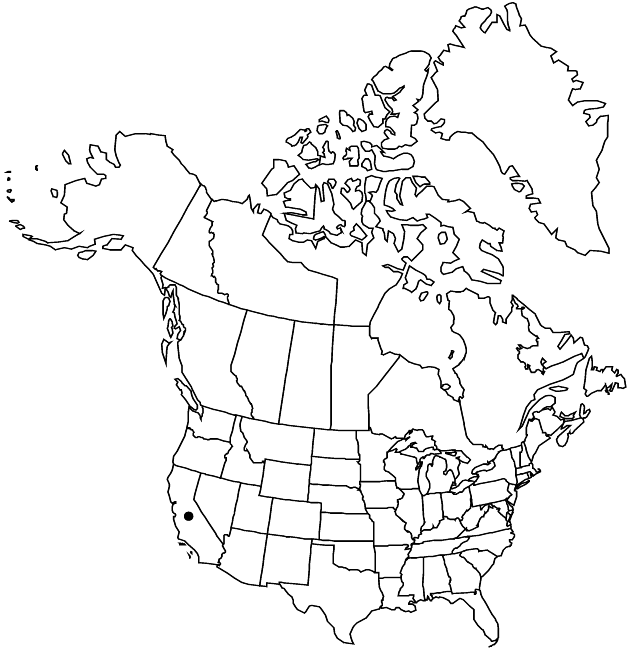Cirsium fontinale var. obispoense
Leafl. W. Bot. 2: 71. 1938.
Common names: Chorro Creek bog thistle
EndemicConservation concern
Basal leaves: longer spines 5–9 mm; distal faces more densely glandular than tomentose. Cauline leaves: longer spines 4–7 mm. Distalmost stem bracts tightly subtending heads or separated from them. Phyllaries 70–120, 28–38 of them reflexed; apical spines 2–3 mm; marginal spines usually absent. Cypselae 3.8–4 mm. 2n = 34.
Phenology: Flowering winter–summer (Jan–Sep).
Habitat: Serpentine seeps, coastal live oak woodlands, grasslands, riparian areas
Elevation: 40–300 m
Discussion
Of conservation concern.
Variety obispoense is known only from the southern Santa Lucia and San Luis ranges of San Luis Obispo County.
Selected References
None.
Lower Taxa
None.
"ciliolate" is not a number."fine" is not a number."less" is not a number.
... more about "Cirsium fontinale var. obispoense"
tomentose +
tomentose +
short-tailed +
introrse +
connate +
long +
innermost +
puberulent +
dilated +
scarious +
linear-oblong +
hirsute +
papillate +
angled +
continuous +
petiolate +
absent +
appressed +
auriculate-decurrent +
strongly undulate;shallowly deeply pinnatifid +
entire;erose +
leafy +
reduced +
spreading +
hairy +
several;many +
barbellate +
many +
coarse +
absent +
taprooted +
woody +
Chorro Creek bog thistle +
actinomorphic +
bilateral +
monomorphic +
not ribbed +
brownish +
glabrous +
3.8mm;4mm +
bractlike +
reduced +
more densely glandular than tomentose +
Calif. +
straight +
eglandular +
green +
distinct +
proximal +
25;200 +
bisexual +
dispersed +
discoid +
singly +
indeterminate +
nodding +
terminal +
few;many +
homogamous +
flattened +
surrounding +
campanulate;hemispheric +
numerous +
coarse +
fibrous +
bristly-dentate +
alternate +
bristle-tipped +
? (?) +
scarious +
absent +
appressed +
2-carpellate +
inferior +
attached +
anatropous +
persistent +
falling +
tough +
thick +
absent +
connate +
imbricate +
persistent +
distinct +
herbaceous +
weakly to strongly +
connate +
stigmatic +
distributed +
reduced +
Leafl. W. Bot. +
1938 +
absent +
epaleate +
flat;convex +
glutinous +
fibrous +
tawny;white +
triangular +
exalbuminous +
modifed +
6;10 +
subequal +
alternate +
separated +
erect +
2-branched +
ringed +
enlarged +
elongate +
Cirsium fontinale var. obispoense +
Cirsium fontinale +
variety +
cylindric +
expanded +
dentate +
bristly-dentate to coarsely +
arachnoid +
fine +
long +
bent +
perennial +
monocarpic +
spiny-margined +
broad +
